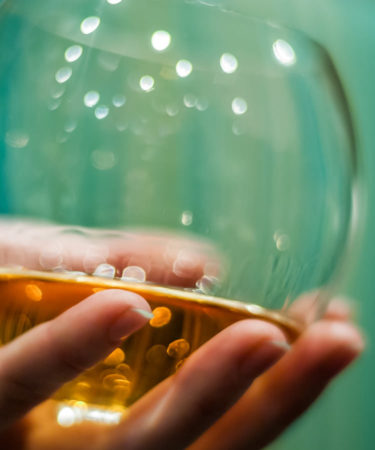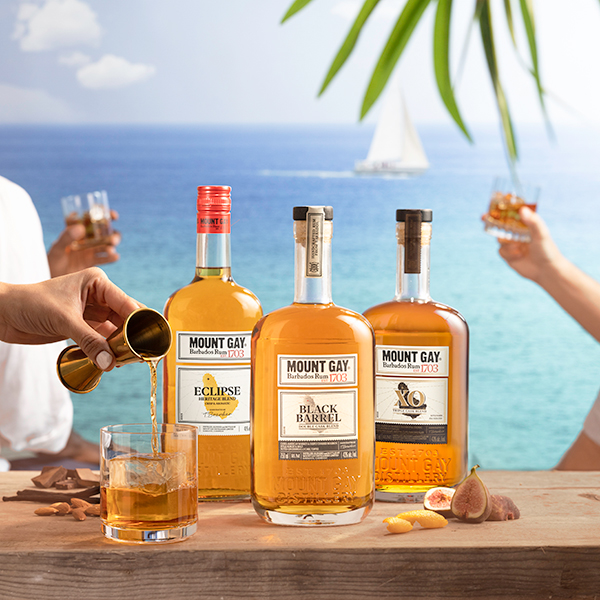With the resurgence of tiki culture, punches, and high-end sipping spirits, expect to notice more space behind the bar dedicated to cane-sugar-based spirits. These bottles span a number of styles and origins and are used to create drinks that may or may not come garnished with an umbrella.
What are we talking about? The trio includes rum, of course, that liquor-cabinet staple. But any tiki or cocktail bar worth its coconuts will also stock French-Caribbean rhum agricole and Brazilian cachaça.
All three use cane sugar as their bases. However, they have simple yet fundamental differences. Here’s what you need to know.
Rum
Classic rum is distilled from fermented sugarcane products, usually molasses, a syrupy byproduct of refining cane or beet sugar. That’s it, though in the U.S. and many other countries, rum must derive from cane, not beet.
Otherwise, rum can be: made anywhere; barrel-aged or not; contain additives like caramel, spices, or more sugar; and sold in clear, gold, or even black versions. Though it’s generally believed to have originated in the 17th-century West Indies, countries worldwide can and do legally produce their own versions and set their own federal standards.
We recognize rum as a sweet treat, yet the sugars in the molasses get fermented out before distillation begins. In its natural form, rum does not run sweet. Too often, producers add sugar to the distillate and dose clear, unaged vats with caramel coloring to give it the look — but not the time required — of wood aging. There is a wide range of rums on the market, spanning unexciting versions critics rightfully call “one-note,” to complex sippers.
While overall U.S. rum sales remained flat in 2017, the Distilled Spirits Council reports that Americans bought 10 percent more of the expensive stuff (we’re talking $175 and up per bottle) than the year prior. The council calls this a “fascination with premiumization” that’s impacting most spirits categories, in addition to beer.
“Adult consumers, particularly millennials, continue to gravitate toward high-end and super premium spirits products,” Council chief economist David Ozgo said in a statement.
Rhum Agricole
Rhum agricole differs from rum in that it’s distilled directly from pressed cane sugar instead of fermented juice or cane byproducts like molasses, and it usually comes from French-speaking Caribbean countries. You could just call it “rhum” but most people don’t.
Invented in Martinique after the island nation’s refined sugar market collapsed, no thanks to cheap competition from South America in the mid-19th century, rhum agricole derived from financial necessity. Despite some online authors claiming only Martinican distillers can make rhum agricole, anyone can make and sell it, but only product that meets certain specifications — including being distilled from fresh cane juice in Martinique — can legally call itself “Rhum Agricole AOC Martinique.”
“Agricole” means “agricultural” in French. Because it’s so pure, drinkers can really taste the terroir. In rhum agricole’s case, this generally means a grassy, slightly funky taste.
Jason Elliott, general manager at Philadelphia’s The Franklin, calls the spirit “versatile” and says, “I find that the delicate vegetal flavor of rhum agricole works best in cocktails with more complex flavor profiles.”
While rhum agricole distribution is currently limited,, Suzanne Long, founder of the San Francisco Bay Area’s Rum Academy, says she sees a “bright future” for the style.
“In contrast to 10-plus years ago, when the public was actually favoring sweeter styles of rum (believe it or not!), these days people tend to lean more toward dryer styles and aren’t afraid of stronger or more unusual flavors,” Long wrote in an email. “Our excitement about craft production has changed our palates and given us permission to like spirits with more flavor. This is a cultural win for rhum agricole.”
Cachaça
With a big U.S. marketing push in store for 2018, cachaça, Brazil’s national spirit, will likely give rum and rhum agricole some competition behind the bar. Like rhum agricole, it can only be distilled from sugarcane juice; but, like rum, that juice must be fermented. Alcohol levels have to register between 38 and 48 percent by volume, as opposed to rum’s usually higher content.
The taste of cachaça can be raw upfront, earthy, vegetal, and floral, though with 5,000 (mostly small and family-owned) distilleries lining the country from north to south, and 30 different varieties of wood to age it in, flavors vary significantly.
Carlos Lima, executive director of the Brazilian Institute of Cachaça, cites “the use of an immense variety of types of wood typical of each of Brazil’s regions such as amburana, jequitibá, amendoim (purpleheart), balsam, ipê, freijó, eucalyptus, castanheira, in addition to several other varieties besides the standard oak.” In an email, he said he believes this range “enhances the enormously rich and differentiated flavors in cachaça.”
Though the United States lists cachaça as a sub-category of rum — something Lima is fighting to change — it is at least one of the few countries to recognize Brazil’s exclusive claim to it so far. That doesn’t mean anyone else challenges the denomination of origin or the history of cachaça as America’s original spirit. Lima traces the first distillation to a sugar mill located somewhere along Brazil’s approximately 4,600-mile coastline between 1516 and 1532.
“Thus, it was the first distilled beverage to be made in Latin America, preceding the development of spirits such as pisco, tequila, bourbon, and rum,” he writes.
Norteamericanos know cachaça primarily as the base for Brazilian caipirinhas, but some of the aged versions sip nicely on their own. It can also swap in for traditional spirits in a variety of classic cocktails including Mojitos, Martinis, and Margaritas.

